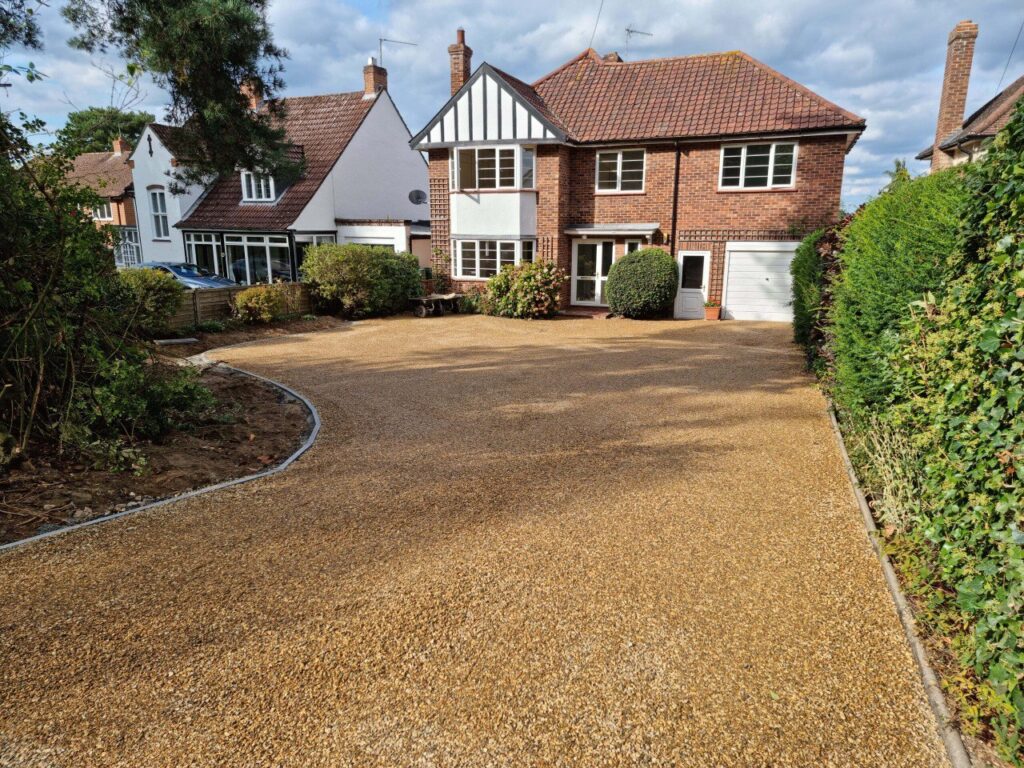Cost Considerations for Resin Bound Paths: Budgeting Tips
Introduction: Resin bound paths are an excellent choice for homeowners seeking a stylish, durable, low-maintenance outdoor space solution. Whether considering a pathway for your garden, a walkway for your driveway, or a patio area, understanding the cost considerations is crucial for effective budgeting. At Rothwell Driveways & Patios, we aim to provide comprehensive insights to help you make informed decisions. This blog post will discuss key cost factors and offer budgeting tips for your resin-bound path project.
1. Material Costs
The primary component of resin bound paths is a mixture of resin and aggregate stones. The type and quality of these materials significantly influence the overall cost. High-quality UV-stable resin, which prevents discolouration and extends the lifespan of your path, typically costs more than non-UV-stable options. Similarly, the choice of aggregate, ranging from natural stones to coloured glass, can vary in price. Opting for quality materials to ensure durability and longevity is advisable, even if they come at a higher initial cost.
2. Installation Costs
Professional installation is recommended for resin bound paths to ensure a smooth and durable finish. The installation cost depends on various factors, including the project’s complexity, the area’s size, and the contractor’s rates. While opting for the lowest quote may be tempting, it’s essential to consider the contractor’s experience and reputation. Quality workmanship is crucial for the longevity of your path, so investing in a skilled professional can save you money on future repairs.
3. Preparation Costs
Proper base preparation is vital for the stability and durability of a resin-bound path. To provide a stable foundation, the existing surface may need to be excavated and levelled, and a suitable sub-base laid. The cost of preparation can vary depending on the site’s current condition and the amount of work required. Ensure that your budget accounts for these preparatory steps, as skimping on the base can lead to issues.
4. Area Size and Shape
The size and shape of the area you wish to cover with resin bound material will directly impact the overall cost. Larger areas require more materials and labour, leading to higher costs. Additionally, intricate designs or irregular shapes may require more detailed work and specialised techniques, increasing the installation cost. Measuring the area accurately and discussing any specific design requirements with your contractor is essential to get a precise estimate.
5. Additional Features
Incorporating additional features such as edging, borders, or patterns can enhance the aesthetic appeal of your resin-bound path but also increase its cost. Edging materials, such as metal or stone, provide a clean finish and prevent the resin from spreading. Patterns and borders can be created using different-coloured aggregates, adding a unique touch to your path. While these features can elevate the look of your path, it’s important to consider them in your budget planning.
6. Maintenance Costs
One of the benefits of resin-bound paths is their low maintenance requirements. However, periodic cleaning and occasional repairs are necessary to keep them in top condition. Budgeting for maintenance ensures that your path remains attractive and functional over the years. Investing in a high-quality resin-bound surface can reduce the frequency and cost of maintenance, making it a cost-effective choice in the long run.
7. Longevity and Value
While the initial cost of a resin-bound path may be higher compared to other materials, its longevity and durability can provide excellent value for money. Resin-bound paths are resistant to cracking, fading, and weed growth, reducing the need for frequent repairs and replacements. This long-term value should be considered when budgeting for your project, as it can offset the higher upfront costs.
Budgeting Tips
- Get Multiple Quotes: Obtain quotes from reputable contractors to compare prices and services. This will help you understand the average cost and identify any outliers.
- Plan for Contingencies: Allocate an additional 10-15% of your budget for unexpected expenses or changes in project scope. This buffer ensures that you can handle any surprises without compromising on quality.
- Prioritise Quality: Invest in high-quality materials and experienced professionals. Cutting corners to save money can lead to higher costs in the long run due to repairs and replacements.
- Consider DIY Elements: If you have the skills, consider handling some preparatory work, such as site clearance or base preparation, to reduce labour costs.
- Seek Professional Advice: Consult with your contractor or a landscape designer for expert advice on material choices, design options, and cost-effective solutions that align with your budget.
Conclusion: Budgeting for a resin bound path involves considering various costs, from materials and installation to maintenance and additional features. By understanding these elements and following our budgeting tips, you can plan your project effectively and achieve a beautiful, durable path that enhances your property.
Call us on: 01536 215 490
Click here to find out more about Rothwell Driveways & Patios
Click here to complete our contact form and see how we can help you with your driveway needs.

